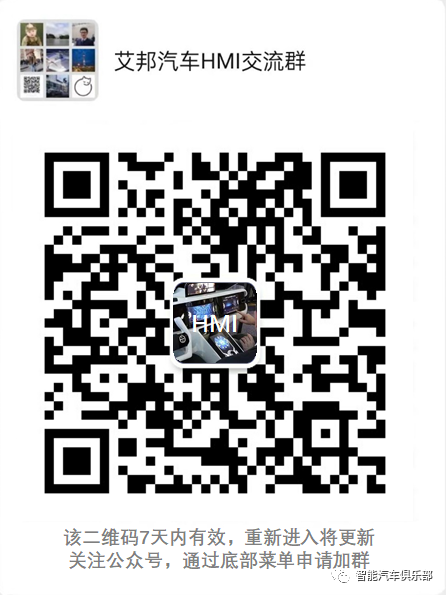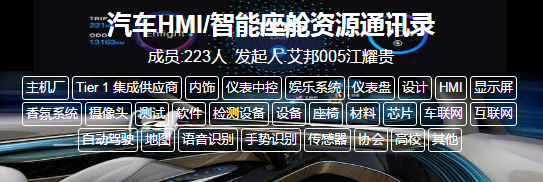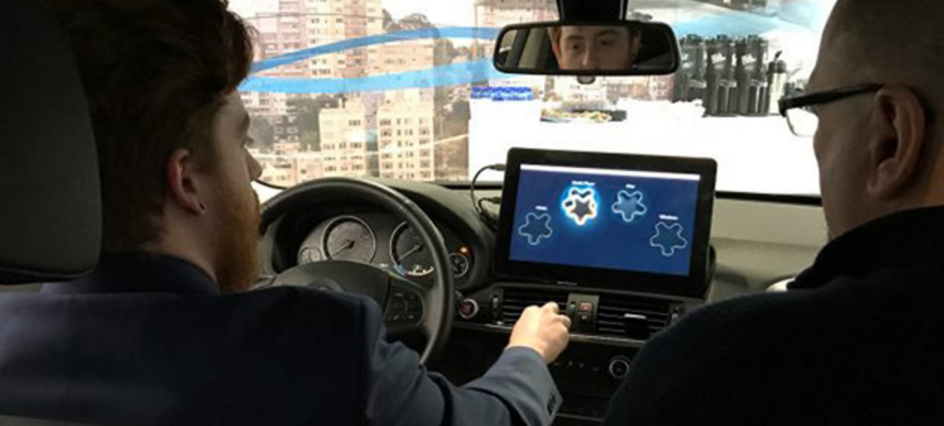

图|大陆集团开发了一个整体人机界面,作为其Cockpit 2025项目的一部分。
什么是人机交互界面HMI
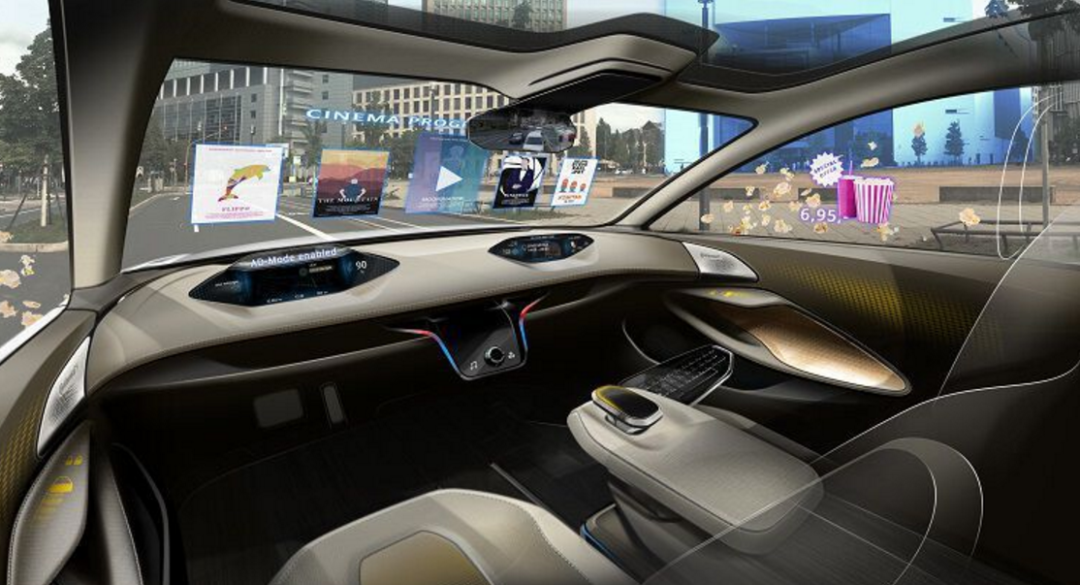
2020年5种人机界面趋势
趋势一
屏幕

图|NXP联合Unity HMI的显示屏案例
趋势二
语音指令
趋势三
触觉反馈

图片来源|映维网
趋势四
线控驱动
趋势五
虚拟助手
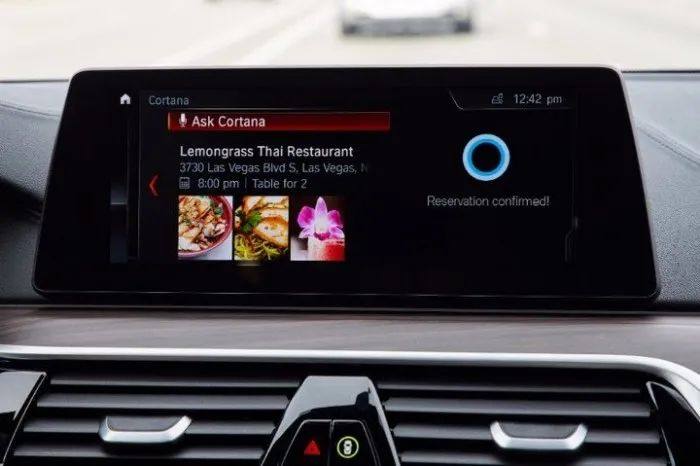
图|宝马个人助理,图源cnBeta
Author / Editor: Jason Unrau / Erika Granath
The human-machine interaction (HMI) story isever-evolving, especially in the automotive industry. How drivers andpassengers interact with their vehicle differs from just a few years ago, andit will be very different in the future.
When you sit in the driver's seat of a well-equipped cartoday, buttons and screens dominate the dash, steering wheel, and instrumentpanel. Odds are that many of the features are new to you, either functionallyor conceptually. However, it's designed for you to familiarize yourself with itfast and start using it naturally without much effort.
Ensuring that technology can be understood and used byalmost anyone is central for engineers of next-gen vehicles. It goes by theterm human-machine interface, or HMI.
What's a Human-Machine Interface?
A human-machine interface can be described as any controlthat allows a person to connect to a machine, system, or device. To use theOxford Dictionary definition of 'interface' may help clarify HMI further:"A point where two systems, subjects, organizations, etc. meet andinteract." A second computing-related definition reads, "A device orprogram enabling a user to communicate with a computer."
HMI applies to infotainment screens, touchpads,navigation buttons, or even simple single-function controls. The human-machineinteraction may or may not be tangible; rather, audible and actionable resultsare also included in HMI.
5 Human-Machine Interface trends in 2020
The definition leaves HMI nebulous and wide open tointerpretation. These five trends in HMI for automotive purposes may helpclarify ways in which humans and machines interact in cars.
Screens
One of the clearest examples of HMI in automotive isthrough screens and displays. In any vehicle, the occupants can manipulate theaudio system's output by pressing a button on the screen to change radiostations, select input devices, explore navigation instructions, and more. Somesystems like Fiat Chrysler Automotive's Uconnect 12.0 infotainment system, aswell as Tesla's 15-inch portrait-oriented touchscreen, incorporate heating,ventilation, and air conditioning (HVAC) controls into the screen also.Fully-customizable, fully-digital instrument cluster displays are also a greatexample of HMI in screens as steering wheel controls let you manipulateinformation on the cluster.
The industry is going towards an increasinglyscreen-based interior. More real estate will be occupied by infotainmentscreens as evidenced by Byton M-Byte's 48-inch wide display, and Ford's15.5-inch screen in the mass-market Mach E electric SUV.
Voice Commands
A dominant technology in automotive applications is voicecontrol. Experts forecast that by 2022, voice controls will be integral in 80percent of in-vehicle HMIs. That doesn't account for voice recognition systemsused in smartphones. Today, most HMIs use voice commands for conveniencefactors like controlling audio systems and placing and receiving phone calls.
As voice recognition technology advances, so do theapplications. In the future, natural language commands will likely be capableof performing complex functions from adjusting follow distance in adaptivecruise control to autonomously taking a passenger to their destination withoutphysical steering, braking, and acceleration input at all.
Haptic Touch
The science of touch is still essential for HMI in cars,even as voice commands take a higher place. Currently, haptic touch is thefeeling of a phone's touchscreen or an infotainment screen that 'bumps' youback when you make a long press. Research is underway that will take haptics tonew heights.
Gesture technology is already in use by BMW, where handmovements in the air are 'seen' by cameras to perform in-vehicle functions.Gesture control will certainly enter mainstream carmakers in some capacity.Taking it further, Ultrahaptics is working on technology to give the sensationof virtual touch response in the air using ultrasound.
Drive by Wire
HMI doesn't always have to be a grand, visible system. Asearly as the late '80s, drive-by-wire has been used for throttle control oncars rather than a mechanical throttle cable. Electric power steering hasallowed for steering input absent a driver that allows for autonomy. Ford'sEnhanced Active Park Assist uses this technology to help you in both paralleland perpendicular parking situations.
Future HMI in drive-by-wire and steer-by-wire systemsautomate vehicle controls. Rather than the constant go, stop, and steer motionsa driver must do, commands to their machine alleviate the need forattentiveness and active participation.
Virtual Assistants
While virtual assistants like Google Assistant, Siri, andAmazon Alexa overlap with HMI voice commands, they serve a somewhat separatepurpose in automotive. Rather than performing vehicle functions, virtualassistants act as a concierge for the driver through voice command and poweredby Artificial Intelligence (AI).
Virtual assistants can currently connect with the servicedepartment to schedule a maintenance appointment, add a reminder to yourcalendar, or make a reservation at your favorite restaurant.
In the future, you could be using a virtual assistant inyour vehicle to hold a conversation or keep you company, suggest driving routesbased on real-time traffic data, or recommend a new podcast based on youremotional and physical demeanor.
智能座舱|HMI|智能网联产业链社群,将为行业内人士在汽车人机交互、智能座舱创新技术、智能座舱趋势等领域提供深度交流的机会,欢迎大家通过社群通讯录拓展人脉,获取行业最新情报,合作共赢。

识别二维码加入群聊
推荐阅读:
活动推荐:
2020年12月18~19日 上海星河湾酒店
(上海闵行区 都会路3799号)
18th~ 19th December,Chateau Star River,Shanghai
Duhui road 3799#,Minhang,Shanghai
会议议题
The topic of the HMI summit forum
|
序号 |
演讲议题 |
演讲嘉宾 |
|
1 |
人工智能时代整车HMI实践探索及趋势 |
北汽新能源总师、部长 闵刚 |
|
2 |
AR-HUD抬头显示技术的HMI体验设计 |
拟邀请未来黑科技,大陆电子等 |
|
3 |
自动驾驶的人机交互新范式 |
北京理工大学 设计与艺术学院交通工具交互设计与用户体验研究方向的负责人 钱晓松 |
|
4 |
通过HMI设计优化用户的注意力和分心 |
新势力品牌产品总监(自动驾驶方向) |
|
5 |
超越HMI的智能汽车用户体验设计 |
湖南大学设计艺术学院副院长,教授,博导 谭浩 |
|
6 |
体验与场景驱动的HMI创新设计 |
拟邀请HMI设计咨询公司 |
|
7 |
智能座舱语音交互的场景探索与交互分析 |
科大讯飞智能汽车 UX高级设计总监 Erin Wang |
|
8 |
多屏联动设计方法/流程与案例 |
新势力品牌产品总监 |
|
9 |
手势识别在新型HMI的应用趋势和案例介绍 |
拟邀请手势识别交互供应商 |
|
10 |
汽车触摸按键的应用场景和案例 |
科思创 全球技术市场经理 Ciro Piermatteo |
|
11 |
智能汽车灯光交互设计案例 |
拟邀请灯光交互供应商 |
|
12 |
智能座舱的多模态人机交互设计原则及方法 |
ThoughtWork车联网总监 朱晨 |
|
13 |
自动驾驶时代,智能座舱HMI设计方法/原则/趋势 |
HMI设计专家、前百度Apollo高级视觉设计师 Shawn cham |
|
14 |
汽车HMI开发流程及软件协同 |
拟邀请HMI开发软件供应商 |
|
15 |
用户、场景、需求与HMI体验设计 |
拟邀请HMI设计咨询公司 |
|
16 |
HMI及体验评测:从软件评测到主客观评测 |
拟邀请中汽研软件测评中心 |
|
17 |
智能座舱HMI痛点、爽点与策略 |
东风HMI负责人 蔡声伟 |
|
18 |
Principles for Mixed Reality HMI Design |
BMW Creative Director of Interaction Design Siddharta Lizcano |
|
19 |
智能座舱车载助手的场景探索 |
阿里巴巴 天猫精灵车载智能助手产品负责人 沈勇 |
|
20 |
HMI设计、测试软件应用案例 |
拟邀请HMI设计咨询公司 |
|
21 |
从人机工程到人机交互,传统主机厂的HMI设计机遇 |
拟邀请江淮、比亚迪HMI负责人 |
|
22 |
HMI设计评价方法与仿真测试平台 |
同济大学艺术与传媒学院副院长 教授,博导 王建民 |
|
23 |
智能座舱的HMI设计创新、挑战和机遇 |
拟邀请奔驰、吉利、长安HMI及产品总监 |
收费标准
Summit charges
|
参会人数 |
1~2个人 |
3个人及以上 |
|
12月17日前付款 |
4500元/人 |
4200元/人 |
|
现场付款 |
4800元/人 |
4500元/人 |
联系方式
Contact information
1. 请加微信了解详情报名:
李小姐:13265790064
ab010@aibang360.com
王小姐:15800874409
auto@aibang360.com

添加微信咨询报名
2. 复制链接或扫码在线报名:
https://www.aibang360.com/m/100066

扫码在线报名
阅读原文,即可报名!
原文始发于微信公众号(智能汽车俱乐部):当今汽车的5种人机界面趋势
